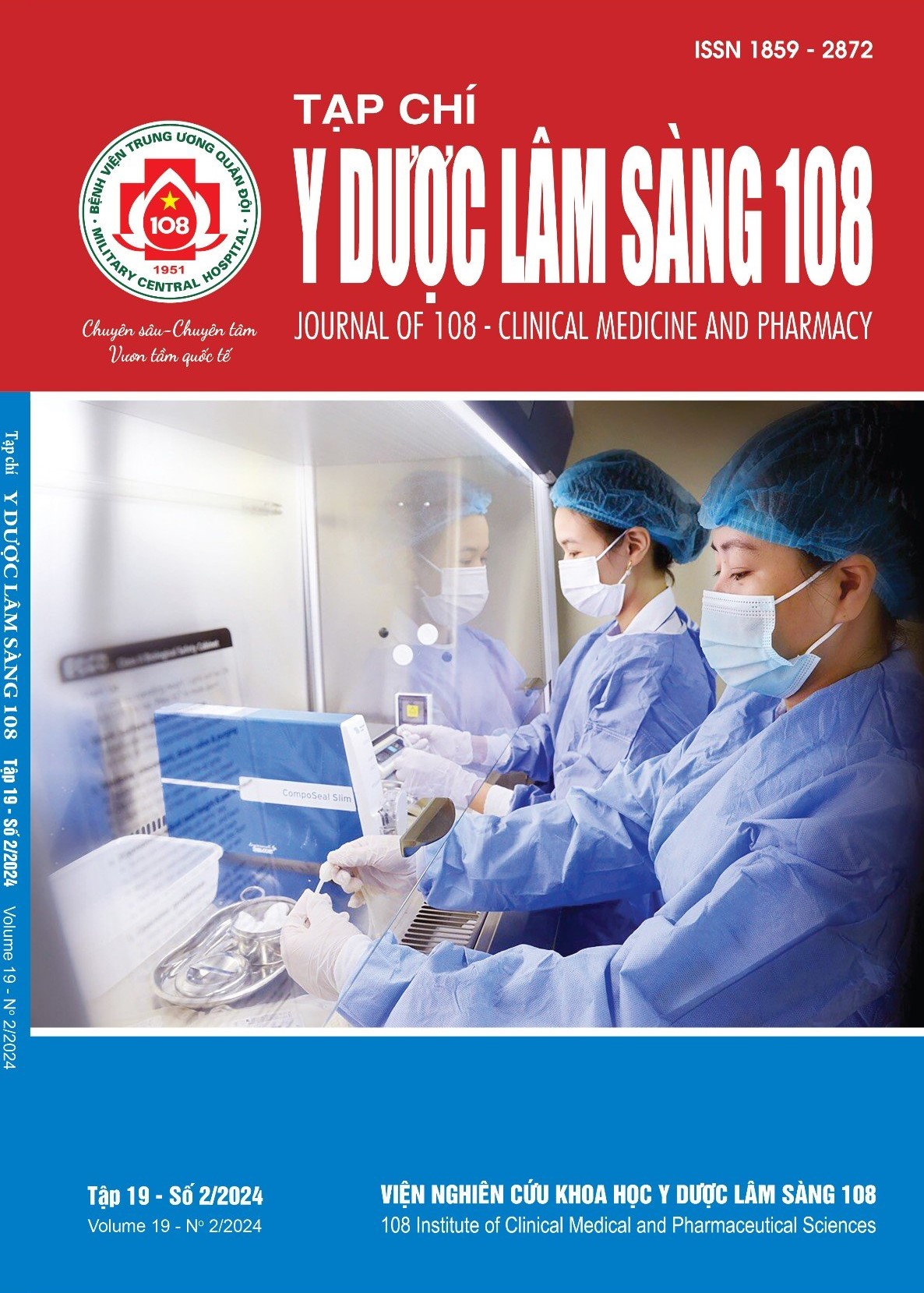Đặc điểm lâm sàng và chất lượng cuộc sống của bệnh nhân sẹo mụn trứng cá
Main Article Content
Keywords
Tóm tắt
Mục tiêu: Sẹo mụn trứng cá là biến chứng thường gặp của mụn trứng cá, ảnh hưởng xấu tới chất lượng cuộc sống của bệnh nhân. Nghiên cứu này nhằm khảo sát đặc điểm lâm sàng và chất lượng cuộc sống của bệnh nhân sẹo mụn trứng cá đến khám và điều trị tại Bệnh viện Da liễu Thành phố Hồ Chí Minh. Đối tượng và phương pháp: Nghiên cứu mô tả hàng loạt ca trên 172 bệnh nhân đến khám và điều trị tại Bệnh viện Da liễu Thành phố Hồ Chí Minh được chẩn đoán sẹo mụn trứng cá, bao gồm sẹo lõm, sẹo lồi, sẹo phì đại. Kết quả: Dạng lâm sàng thường gặp của sẹo mụn trứng cá là sẹo lõm, phần lớn bệnh nhân ở mức độ nặng - Goodman 4 (76,7%), còn lại là mức độ trung bình - Goodman 3 (23,3%). Thời gian mắc mụn trứng cá, tình trạng nặng của mụn trứng cá, thói quen cạy nặn mụn, tiền căn gia đình có liên quan tới sẹo mụn. Sẹo mụn trứng cá làm giảm chất lượng cuộc sống của bệnh nhân, điểm trung bình chất lượng cuộc sống trong da liễu (DLQI) của bệnh nhân sẹo MTC là 5,92 ± 1,12. Tổng điểm chất lượng cuộc sống = 0,206 x (điểm độ nặng của sẹo mụn) +2,864. Kết luận: Sẹo mụn trứng cá làm giảm chất lượng cuộc sống của bệnh nhân. Vì vậy, bên cạnh việc điều trị sớm mụn trứng cá để phòng ngừa sẹo, phải quan tâm đến khía cạnh hỗ trợ tâm lý cho bệnh nhân cũng như điều trị sẹo mụn sớm.
Article Details
Các tài liệu tham khảo
2. Basra MK, Fenech R, Gatt RM, Salek MS, Finlay AY (2008) The Dermatology Life Quality Index 1994-2007:
A comprehensive review of validation data and clinical results. Br J Dermatol 159 (5): 997-1035.
3. Chuah SY, Goh CL (2015) The impact of
post-acne scars on the quality of life among young adults in Singapore. J Cutan Aesthet Surg
8(3): 153-158.
4. Fried RG, Werschler P, Berson D, & Do Del Rosso, JQ (2015) The Psychosocial Impact of Post-Acne Scarring. The Dermatologist.
5. Hayashi N, Miyachi Y, Kawashima M (2015) Prevalence of scars and "mini-scars", and their impact on quality of life in Japanese patients with acne. J Dermatol 42(7): 690.
6. Layton AM, Henderson CA, Cunliffe WJ (1994)
A clinical evaluation of acne scarring and its incidence. Clin Exp Dermatol 19(4): 303-308.
7. Tan J, Thiboutot D, Gollnick H, Kang S, Layton A, et al (2017) Development of an atrophic acne scar risk assessment tool. J Eur Acad Dermatol Venereol 31(9): 1547-1554.
 ISSN: 1859 - 2872
ISSN: 1859 - 2872
